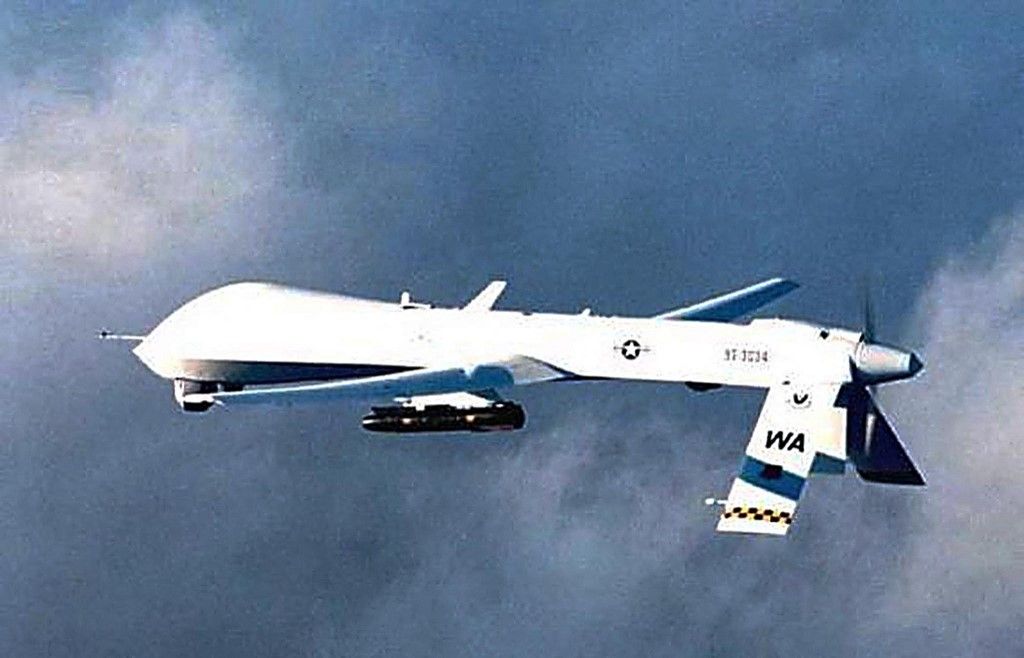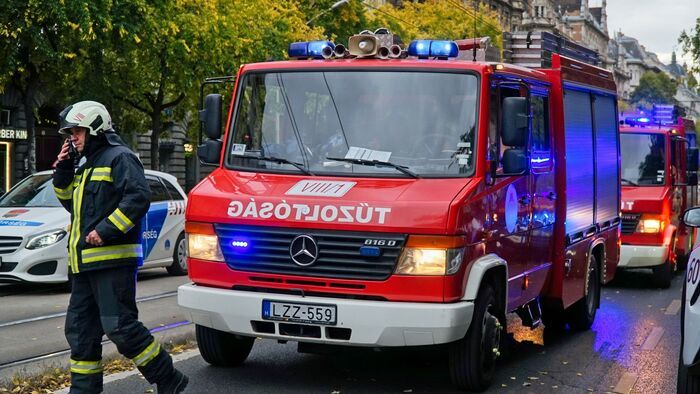At the forefront of this innovation are developments like the Hellhound drone, designed in the United States. Produced using 3D printing, it features a turbojet engine and can reach astonishing speeds of up to 370 mph (600 km/h). Thanks to its lightweight and modular design, it fits in a backpack and can be configured for a wide range of tasks—from reconnaissance to target destruction.
Game of Drones: Revolutionary Shifts in Modern Warfare
The pace of wartime drone technology has accelerated at an unprecedented rate in recent years, radically transforming the face of modern warfare. Unmanned aerial vehicles have evolved beyond reconnaissance to play key roles in both offensive and defensive operations.

Significant strides have also been made in defensive capabilities. The United Kingdom’s new StormShroud electronic warfare drones are capable of jamming enemy radars, thereby shielding expensive manned fighter jets such as the F-35 and the Typhoon. Thse drones are based on the Tekever AR3 platform and Leonardo’s BriteStorm system, representing a major milestone in the future of human-machine collaboration.
Ukraine: At the Forefront of the Drone War
The Russia-Ukraine war, which began in 2022, has become a testing ground for drone technology in combat. Ukraine is at the forefront of implementing innovative drone solutions. For example, Ukrainian manufacturer Wild Hornets has developed FPV (First Person View) drones equipped with grenade launchers, enabling the precise elimination of remote targets.
However, drone countermeasures are advancing rapidly as well. India has successfully tested its low-cost anti-drone system, Bhargavastra, which uses micro-missiles to neutralize entire swarms of drones within seconds.
The Future of Warfare: Autonomous Systems and Artificial Intelligence
The integration of artificial intelligence (AI) into drones is opening new frontiers in warfare. In 2020, a Turkish-made drone allegedly carried out an attack in Libya independently, without human intervention—the first documented case of its kind. This highlights the vast potential of autonomous systems as well as the ethical dilemmas they pose.

Expert: Drones Modify, But Do Not Redefine, Warfare
The term "wonder weapon" is often used in discussions about drones. However, Balint Somkuti, a security policy expert, told our newspaper:
There’s a lot of buzz about drones, and people tend to see them as magic weapons. But the reality is that every technological innovation only modifies warfare—it doesn’t change its essence.

The Origins: Conquering Airspace for Military Purposes
The use of airspace for military purposes has long intertwined ground combat with aerial warfare—a development that brought drones into the picture.
Ever since airspace has been used for warfare, every ground battle has also been an aerial one. Drones emerged as part of this evolution,
– Mr. Somkuti explained, noting that the first significant drone deployment occurred in 1982 in Lebanon’s Bekaa Valley, where the Israeli Air Force used remotely operated vehicles to monitor and decoy Syrian air defense systems.
That’s when we can start counting the drone era—an era that, enhanced by many other technologies, continues to this day.
According to Mr. Somkuti, the Russia-Ukraine war has served as a catalyst for the advancement and spread of drone technology.
The Russia-Ukraine war has prompted serious developments in this field. There had been talk of drones transforming warfare before, but this military conflict was the trigger for their widespread adoption and intense use,
– he added.
The precursors to modern drones already appeared during the Yugoslav wars.
In the early 2000s, U.S. systems were deployed that had conducted surveillance during NATO and American airstrikes in 1999, using pilotless aircraft to identify enemy air defense positions. In many places, kamikaze drones also began to appear. What’s new in the Russia-Ukraine war is the sheer volume of drone usage,
– Mr. Somkuti pointed out.

Drone-related losses are rising on both sides of the conflict, reflecting the growing significance of the technology.
With a bit of exaggeration, some claim that drones could even replace artillery. That’s clearly not true, but it illustrates how military units on both sides are suffering increasing losses due to drone strikes.
Applications and Capabilities
Drone usage generally falls into two categories:
reconnaissance and strike. Among the latter, kamikaze drones play a particularly prominent role.
Reconnaissance drones use sensors, cameras, thermal imagers, or infrared units to monitor the battlefield.
As a result, the chance of surprise on the front lines has drastically diminished. Today, there’s no hiding from the all-seeing eyes of drones and satellites.
Drones like the Bayraktar have become popular for their dual capabilities. They can conduct reconnaissance while also delivering strikes, as they can be equipped with anti-tank missiles.
They can conduct reconnaissance while also delivering strikes, as they can be equipped with weapons—including even smaller anti-tank missiles—at up to four mounting points.
In the Russia-Ukraine war, civilian drones converted for military use have also played a key role, primarily for observation and kamikaze attacks.
Later in the conflict, civilian drones retrofitted for military use began to appear. These are primarily reconnaissance drones, but when fitted with an explosive device, they become effective kamikaze drones. One notable exception is Russia’s Lancet 3, with its unique dual-X tailfin design, which gives it excellent maneuverability and has inflicted significant Ukrainian losses.
On the Ukrainian side, the Baba Yaga drone—originally an agricultural drone with eight propellers—has gained notoriety.
Both sides are actively targeting enemy drones. Just as the Russians use Lancets and smaller drones to attack Baba Yagas, Ukrainians counter with strikes on Russian Orlan drones.
Interestingly, a large share of drones used on the frontlines are manufactured in China.
Around 90 percent of drones deployed at the front line are made in China. They are assembled and militarized in Russia and Ukraine.
The Latest Innovations
Most drones are controlled via radio waves.
Drones are unmanned aerial vehicles (UAVs) that are generally operated remotely, through radio signals. Because of the threat posed by drones, the tools of electronic warfare have appeared on both sides, and are now considered widespread.
On many clips showing drone strikes, the footage often disappears in the final moments because of the "jammers".
További IN ENGLISH híreink
This happens because many vehicles are equipped with so-called drone jammers that make final-phase control impossible. However, a fast-moving drone is hard to stop once it's close.
In reconnaissance missions—where real-time imaging is crucial—radio signal disruption is a serious issue. This has led to increasing use of fiber-optic-controlled drones. While the thin optical cables limit payload, they provide an almost unjammable data connection.
Effectiveness vs. Cost
Mr. Somkuti also noted that while drones are highly effective weapons, they are fundamentally low-cost.
They’ve become widespread because they’re far more effective and accurate than many alternatives. So their relative cost is less important than the strategic impact they deliver.
In comparison: while an artillery shell is cheaper than a drone, it lacks precision.
Drones are designed to destroy targets. Commercially available drones are cheaper, but they must be modified for military use: they must be equipped with explosives, and their controls must be adapted.
The Ukrainian armed forces employ numerous small aircraft converted into drones, some with ranges exceeding 600 miles (1,000 kilometers). However, acquiring and modifying these systems is not cheap.
Buying them isn't cheap, and then they have to be modified—so pricing varies by weapon type, and there's often a significant markup
– Mr. Somkuti emphasized.
Depending on their category, drone prices can range from a few hundred dollars to several million, depending on size and mission.
– the expert summarized.
In conclusion, the evolution of drone technology is fundamentally reshaping modern warfare. Cheap and versatile drones that can be produced swiftly allow smaller nations—or even non-state actors—to participate effectively in contemporary conflicts. This presents a major challenge for traditional armies, which must adapt to these emerging threats.
További IN ENGLISH híreink
Cover photo: The Scan Eagle UAV, a small GPS-guided surveillance aircraft, can fly over a designated battlefield for up to fifteen hours and transmit real-time images back to its launch site (Photo: USMC/AFP)
A téma legfrissebb hírei
Tovább az összes cikkhez
Brutal Losses: How Tisza's Package Would Burden Seniors
Here is how much an average pensioner would lose under the Tisza Party’s austerity package.

Ukraine in Crosshairs: Russia–Ukraine Legal Battle Enters a New Dimension
A new political instrument is in Moscow’s hands.

PM Orban: America’s New Strategy Pinpoints Europe’s Decline
Decision-makers in the United States would place Europe–Russia relations on an entirely new footing.

Hungary FM: EU Is Endangering Global Security
Peter Szijjarto attended the meeting of the Organization of Turkic States.
Ne maradjon le a Magyar Nemzet legjobb írásairól, olvassa őket minden nap!
- Iratkozzon fel hírlevelünkre
- Csatlakozzon hozzánk Facebookon és Twitteren
- Kövesse csatornáinkat Instagrammon, Videán, YouTube-on és RSS-en

Komment
Összesen 0 komment
A kommentek nem szerkesztett tartalmak, tartalmuk a szerzőjük álláspontját tükrözi. Mielőtt hozzászólna, kérjük, olvassa el a kommentszabályzatot.
Címoldalról ajánljuk
Tovább az összes cikkhez
Brutal Losses: How Tisza's Package Would Burden Seniors
Here is how much an average pensioner would lose under the Tisza Party’s austerity package.

Ukraine in Crosshairs: Russia–Ukraine Legal Battle Enters a New Dimension
A new political instrument is in Moscow’s hands.

PM Orban: America’s New Strategy Pinpoints Europe’s Decline
Decision-makers in the United States would place Europe–Russia relations on an entirely new footing.

Hungary FM: EU Is Endangering Global Security
Peter Szijjarto attended the meeting of the Organization of Turkic States.

















Szóljon hozzá!
Jelenleg csak a hozzászólások egy kis részét látja. Hozzászóláshoz és a további kommentek megtekintéséhez lépjen be, vagy regisztráljon!